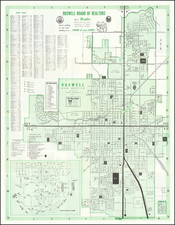This engaging chalk pastel cartoon, likely created in the first half of the 18th century or somewhat earlier, personifies the continent of America as a woman, reflecting a tradition of allegorical representations extending well into the 17th century and beyond. Rendered with skilled, detailed strokes, the image captures the period's fascination with the newly explored lands and their varied, exotic inhabitants.
The practice of personifying continents as female figures traces its roots back to the Renaissance and was popularized during the Age of Exploration. In this particular work, the female figure of America is depicted with an arrow in her right hand, her left breast revealed, and a jewel-encrusted diadem with feather plumes gracing her hair. Over her shoulder, a small lizard serves as a stand-in for the traditional alligator, a symbol often associated with the continent. These elements combined form an artistic interpretation of the 'wild' and 'exotic' aspects attributed to the New World.
This pastel cartoon is thought to be part of a larger set, possibly including similar personifications of Asia, Europe, and Africa. Such series were common during the period, offering a comprehensive tableau of the known world. Though the image appears unfinished, its high level of execution indicates it was intended as a cartoon—a full-size preparatory study for a final artwork, perhaps an oil painting or an engraving.
As an artifact, this chalk pastel cartoon is a window into the cultural imagination of the Enlightenment era. It stands as an artistic testament to a time of unprecedented exploration and discovery, capturing the intrigue and allure of a new world, as seen from the old.











![(Native American Photograph) [Fox On The War Path (Ke-wuk-o-car-war-ry), a Pawnee man of Indian Territory]](https://storage.googleapis.com/raremaps/img/small/93109.jpg)
![[The Execution of Jean de Poltrot in Paris on March 18, 1563] Richtung des Meray Poltroc genant gescheen zu Paris den 18 Marzens 1563.](https://storage.googleapis.com/raremaps/img/small/78588.jpg)
![(Native American Photograph) [Outdoor scene of six Wichita Indians playing cards at a ranch in Minco, Oklahoma Territory, with horse-drawn carriages in the background]](https://storage.googleapis.com/raremaps/img/small/93106.jpg)

![(American Lithography) [Collection of Early American Lithographs, including the First Known American Lithograph of a Natural History Subject - by Charles Alexandre Lesueur; early lithographs by Abadie and other unnamed experimentalists; and unattributed student artwork, likely by pupils of Marie Duclos Fretageot's girl's school]](https://storage.googleapis.com/raremaps/img/small/90036.jpg)
